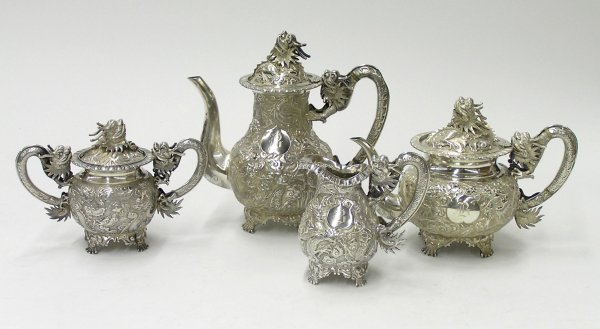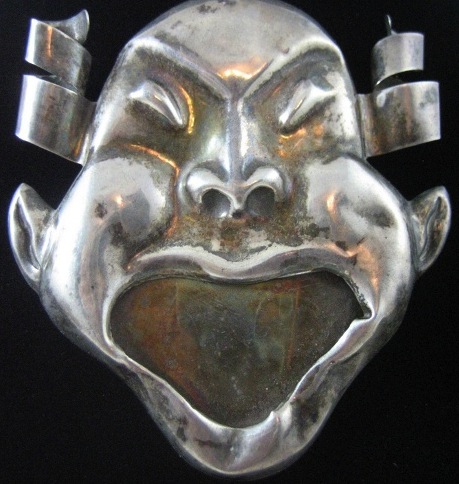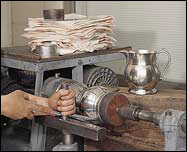STERLING
Sterling has long been the recognized standard for solid silver although in present day America with free time at a premium, fewer people own sterling. By law sterling must be 925 parts pure silver and 75 parts alloy, usually copper, which provides the strength and hardness as pure silver is soft. Silver can be hammered into sheets so thin that 100,000 of these stacked sheets would measure just an inch and can be drawn into a wire finer than a human hair. Sterling may be the most hygienic metal – with actual germ-killing properties and it is through use and gradual accumulation of microscopic scratches that sterling achieves its lustrous patina. As silver bullion increases in price so too does sterling tableware.
SILVERPLATE
Silverplate has a base metal – usually an alloy of nickel, copper and zinc – that is then plated with liver which is electrostatically applied or coated to the alloy base. The old Sheffield process for silverplate was discovered by accident when a cutler was repairing a knife blade and heated two metals – silver and copper – which fused to create a silver sandwich around the copper. The quality of silverplate is based on the amount of silver deposited on the base.
STAINLESS
Stainless steel is an alloy comprised of steel, which is composed of iron, chromium, and nickel. The terms 18/8 and 18/10 refer to the ratio of chromium and nickel. 18/10 has more nickel which assures a satin-like sheen. The weight of stainless is an indication of its quality, as is the balance of the piece. To manufacture stainless, blanks of steel are rolled to the right proportions for bowls and tines then dies are used to stamp the pattern.
BRASS
Brass dates to 500 B.C. to the Greek island of Rhodes. During the 18th Century, brass was formed by sand casting where sand and clay were packed around the pattern of an object to be cast to form a mould. Today, a brass rod is heated to 1400 degrees and placed on a set of dies which are stamped on the brass and which forces the metal into the shape of the die. The process is called forging.
PEWTER
Of all the metals pewter has one of the richest histories but also the hardest time dispelling its negative myths. Today, pewter is lead-free and primarily composed of tin which is combined with antimony and copper. Pewter is a relatively soft alloy because its primary element, tin, is a soft metal. Because pewter is more flexible than other metals, it can be formed in many ways including casting or spinning. Because pewter is soft, it can scratch easily, a distinction which enables craftsmen to give pewterware a range of finishes from mirror bright to satiny low lustre.











